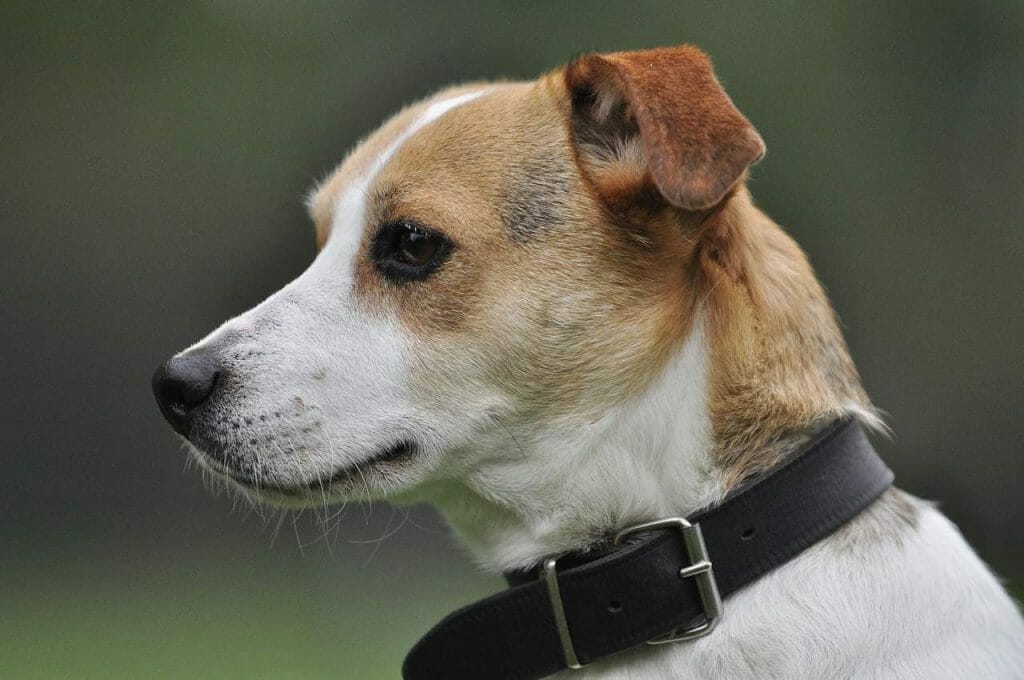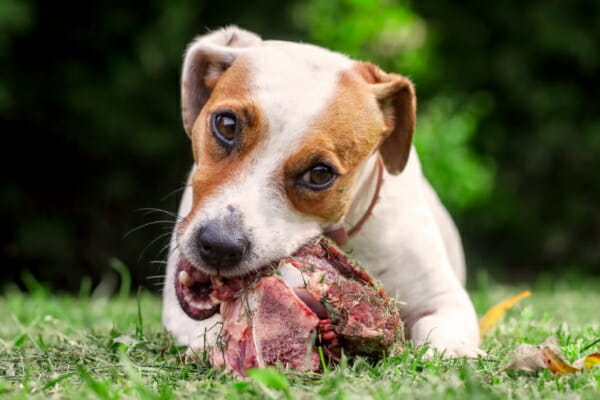Are you wondering how to tell if a Jack Russell Terrier (JRT) is a purebred dog? Jack Russell Terriers are a high-energy small dog breed. They were initially bred in Britain as fox hunting dogs, and purebreds frequently perform well in dog shows and competitions. There are several ways for you to know How to Tell If a Jack Russell Terrier Is a Purebred. Let’s explore the ways to identify them.
There are four key elements to observe when learning how to tell if a Jack Russell Terrier is a purebred (click on each element for a complete description):
While there are variations involved in each element, specific details, like the amount of white on the coat, will show the purity of the breed.
If you’re looking to get a purebred Jack Russell Terrier, read on to find out more about how to identify one correctly.
The Characteristics of a Purebred Jack Russell Terrier

Jack Russell Terriers (officially listed as Parson Russell Terriers by the American Kennel Club) are a prized dog breed and one that often does well in dog shows. If you would like to enter competitions with a Jack Russell Terrier, you will usually have to make sure you get one with characteristics that follow the breed standard. The standard is broad, but some specific requirements have to be met.
The Jack Russell’s Coat
When it comes to dog competitions, in particular, requirements for purebred Jack Russell Terriers can be very detailed. The coat is one of the most noticeable aspects to observe in dogs and one of the most important in establishing whether a Jack Russell Terrier is purebred.
The double coat of a purebred Jack Russell Terrier should ideally contain more than 51% white. There should also be black or tan patches on the face and around the tail. The skin of the Jack Russell Terrier should be pink and dotted with either brown or black freckles.
Jack Russell Terriers can have differently-textured fur, which will affect the requirements for coat length. Those with smooth fur should have no sparse spots, no silky texture, and the coat should remain around 1.5cm/0.60in in length. Those with rough coat fur should not have a wooly texture, and their coat length should not exceed 10cm/4in.
Jack Russell Terriers can also have what’s called a broken coat: a combination of the two types of textures. This may alter the length of hair found on the face or around the tail.
The Head and Face
Breed experts will recommend several things when it comes to the head and face of a Jack Russell Terrier. A purebred should have ears in the shape of a V that are a moderate distance apart. The ears should also taper over the eyes, which should be almond-shaped and dark.
The head of the Jack Russell Terrier should be proportional to the body and feature a flat skull. The nose should be black, and the length of the muzzle should be taken into consideration too. The mouth should feature powerful teeth, preferably with an overlap in the bite. The preferred bites are the scissor and the level.
The scissor bite has the lower canines ahead of the upper ones. The jaw of a Jack Russell Terrier dog should also be strong and well-muscled in the cheek area. The stop, the angle where the skull and the nasal bone slope, should be defined but not too much.
The Posture
A purebred Jack Russell Terrier dog will tend to take a stance of balance and alertness. The dog’s posture is essential in competitions, as the legs must be observed in a straight position.
The Jack Russell Terrier moves with a bouncy, assured demeanor that reflects the breed’s personality of confidence and service. During trotting movements, the dog’s posture should be upright and alert, and the gait should be smooth with an obvious sense of power and finesse.
When standing, the dog’s legs should neither turn in or out, and the feet should not cross or obstruct one another when viewed from any angle.
Purebred JRTs are known for the strength of their hindquarters, but many of them can be affected by a genetic condition known as achondroplasia. This condition causes the legs to be bowed or crooked and can even stunt the terriers’ growth.
The Build
The build of Jack Russell Terriers is a breed characteristic that has barely changed in the breed’s more than two-centuries-old history. This makes it easy to identify the purebred dogs based on a few criteria:
- They have to measure 10-15in/25-38cm in the area between the shoulder blades, also known as the withers.
- The preferable weight is between 14-18lb/6-8kg and should always be proportional to the length of the body and the size of the head.
- The hindquarters should be strong and flexible to allow for a good degree of propulsion when the dog is running.
- The feet should be round with hard padding and not turned either out or in.
- The tail should be tall and strong, about four inches long if proportional to the body’s length.
- The neck should be well-muscled, proportionally long, and broader at the shoulders.
- The chest should not be too wide, as this was originally a breed meant to hunt foxes in burrows, and the ability to fit through narrow spaces continues to inform the genes.
- The body should be shaped like a rectangle and sturdy.
- The shoulders should be laid back.
- The body of Jack Russell Terriers tends to be longer than it is tall.
How to Tell if a Jack Russell Terrier is a Purebred: Personality Traits to Know
Jack Russell Terriers are “working terriers” bred to hunt their prey even if it hides in burrows underground. If they don’t get to hunt foxes, Jack Russell Terriers feel compelled to work, whether helping you with an activity or dedicating themselves to digging up the garden. Here some of the identifying personality traits of a purebred Jack Russell Terrier dog:
The Hunting Gene
It may not strike you at first, but Jack Russell Terriers are not low maintenance dogs. Both as a puppy and as adults, they have almost infinite supplies of energy and are highly active. They require plenty of exercise and outdoor activities. A short walk won’t keep them entertained for long, so you must bear in mind that you’ll need to actively dedicate significant parts of your schedule to them.
Regardless of whether you will use them for hunting or not, Jack Russell Terriers still carry that gene, and it continues to inform their personality. They are brilliant dogs, but they also require more training, discipline, and attention. You will become very aware of their demands for the outdoors and attention when you have them.
Jack Russell Terriers are baying dogs, which means that when they engage in the hunt, once they find the game (animal) that they are hunting, they will bay (bark and howl, or other vocalizations) relentlessly until their master (You!) calls them off. While their instinct to hunt is strong, since they are baying dogs, they do not have a strong attack or kill instinct. Nevertheless, it is usually wise to not have JRT’s around very small children or very small animals.
These dogs are also courageous, but this can make them reckless. Supervision is also required when you are roaming the outdoors together to make sure they don’t tackle a “foe” or go off on a path that is too challenging, especially when they are at the stage of adult dog. Their instinct can also take over and have them hunting or chasing prey to the point of getting lost or hurt.
The Family Aspect
While purebred Jack Russell Terriers are highly suitable for active owners with plenty of free time for outdoor activities, these dogs can also make great family pets when adequately trained. Early training for a Jack Russell Terrier puppy should include potty training your Jack Russell pup due to their high activity level, which can lead to potty accidents if they are not taken out to pee regularly.
JRT’s / PRT’s are exceedingly loyal and very affectionate to their humans who they have bonded with. Jack Russel Terriers were bred to serve their masters, and they take great pride in doing so.
Jack Russells are genuinely kind to, and patient with, children. They are smart enough to recognize that the children are ranked ahead of them in the family “pack.” However, because of their high energy and general rambunctiousness, it is a good idea to closely monitor your dog’s interactions with smaller children, especially those under four to six years old.
In general, Jack Russell Terriers (Parson Russell Terriers) become very attached to their families, so this breed tends to have high levels of separation anxiety. Of course, in a perfect world, we would take them with us everywhere, but unfortunately, we can’t do that. So it is important that early training includes frequent, short outings without the pup to get them used to being alone from time to time.
How to Tell If a Jack Russell Terrier Is a Purebred: Our Conclusion
Jack Russell Terriers are a popular hunting breed that is also suitable for family life as long as their energy is worked off through exercise. From their short, but muscular stature to their unmistakable fur patterns and markings, purebred Jack Russells are usually easy to spot. But if you don’t have the pup’s registration papers, and you need to know for sure, the simplest route to find out if the dog is purebred is by getting a doggy DNA test. These tests are simple (and painless) and owners usually get the DNA test results back within a couple of weeks (sometimes sooner).
FAQ’s
What’s the difference between a Jack Russell and a Jack Russell Terrier?
A Jack Russell is simply a shortened name for Jack Russell Terrier (the same breed as the Parson Russell Terrier), so Jack Russell, Jack Russell Terrier and Parson Russell Terrier are all the same. However, there is a distinctly separate breed know as the Russell Terrier (no “Jack” in the breed name). The Russell Terrier has been nicknamed the Shorty Jack.
At first glance, Jack Russell Terriers and Russell Terriers look almost identical; the only real difference being that, on average, the Russell Terrier has shorter legs and is just a bit smaller than the Jack Russell Terrier.
Is Jack Russell Terrier a good family dog?
Yes. Jack Russell Terriers, or JRT’s (officially known as Parson Russell Terriers) are energetic dogs that are ideal for active families. Because of their tendency to always be in motion, JRT’s are recommended for families with children older than three or four years of age. JRT’s love to explore and go on adventures, so it’s a bonus if you and your family have an adventurous side, too! It’s preferable for Jack Russells to live with a family who can give them lots of attention as they do have a tendency to get bored when under-stimulated.
Are Jack Russells naturally aggressive?
No, Jack Russell Terriers are not naturally aggressive in the sense of being physically aggressive just for the sake of hurting something.
Jack Russell Terriers were bred to be baying dogs, which means that they hunt the game to point of locating it, then they vocalize (bark, howl etc.) until their master arrives. Baying dogs only locate the hunted game, they do NOT kill, or even attack, the hunted animals.
However, it should be noted that Jack Russell Terriers are EXTREMELY loyal to their human families, so if they sense danger from a strange/unknown dog, their protection instincts could “kick in” and they might attempt to physically stop the “threat.”
Are Jack Russells smart dogs?
Yes. Jack Russell Terriers (also known as Parson Russell Terriers) are highly intelligent dogs. Not only are Jack Russells smart, they are also extremely loyal to their humans. Jack Russell Terriers that are raised in a loving, positive atmosphere are also very affectionate toward their humans. Many Jack Russell owners say that their bond with their dogs are near a human level!
However, because Jack Russells are so smart, their owners have to keep a watchful eye on them until they are fully trained, as they were bred first and foremost to be hunting dogs, so if given the chance, they will find a way to sneak out of the house, even the yard, to go on hunting adventures!
Do Jack Russell Terriers bark a lot?
The amount of barking a JRT does depends on its current activity and the setting. While hunting, Jack Russells tend to bark a lot, as they are baying dogs, which means that they were bred to be very loud when they have tracked down game or prey. The two major baying tendencies are barking and howling, so JRT’s can get very loud.
The good news is that since barking is part of their “work,” they don’t tend to bark a lot for no reason. They will, however, likely bark at strange dogs to communicate their “ownership” of the territory. So, it is very important to socialize JRT’s with people and other dogs from a young age. As with any aspect of a dog’s behavior, early and consistent training is key.








